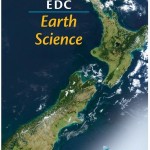 Earth Science
Earth Science
Foundation Science: Earth Science, now EDC Earth Science, published by LAB-AIDS, is a full-year, activity-driven high school earth science course developed with support from the National Science Foundation and fully aligned to A Framework for K–12 Science Education: Practices, Crosscutting Concepts and Core Ideas (The Framework) (National Research Council (NRC], 2012). Active, inquiry-oriented learning involves the students, and the course challenges them with provocative questions and data-intensive investigations. EDC Earth Science has been designed in the belief that students are capable of rigorous and in-depth explorations in science when given adequate support, structure, and motivation for learning.
EDC Earth Science includes the following goals:
- In-depth understanding of content based on recommendations in national and representative state frameworks,
- Development of reading, writing, analysis and communication skills requisite for a science-literate citizen.
- The use of historical, newsworthy and fictionalized stories to draw students into the earth science content, to motivate them to acquire the knowledge for solving a problem, and to serve as a framework around which students build conceptual understandings.
- Tackling problems and challenges in science using data, critical thinking, and problem solving to reach decisions grounded in data, knowledge and logic.
- Varied learning strategies and activities that help students construct meaning from their experiences and that serve as bridges between concrete and abstract thinking.
Each chapter of EDC Earth Science offers a cluster of activities that addresses a specific set of concepts and practices and is centered on a challenge that embodies the learning goals. The challenges focus on real, relevant, and often complex problems that scientific information and analyses can help resolve. For example, in Chapter 11 students are challenged to consider whether development should occur on the flanks of Mount Rainier. To gather the information necessary to address this challenge, students explore the nature of subduction zones and their relationship to plate tectonics and learn basic volcanology. They also analyze authentic scientific monitoring data and draw individual evidence-based conclusions about the level of risk associated with living near a Cascades volcano.
Read more about this newly published product.
![]() View a PDF Poster of a sample lesson.
View a PDF Poster of a sample lesson.
Visit the Lab-Aids Website to see the publishers page for this text book.


